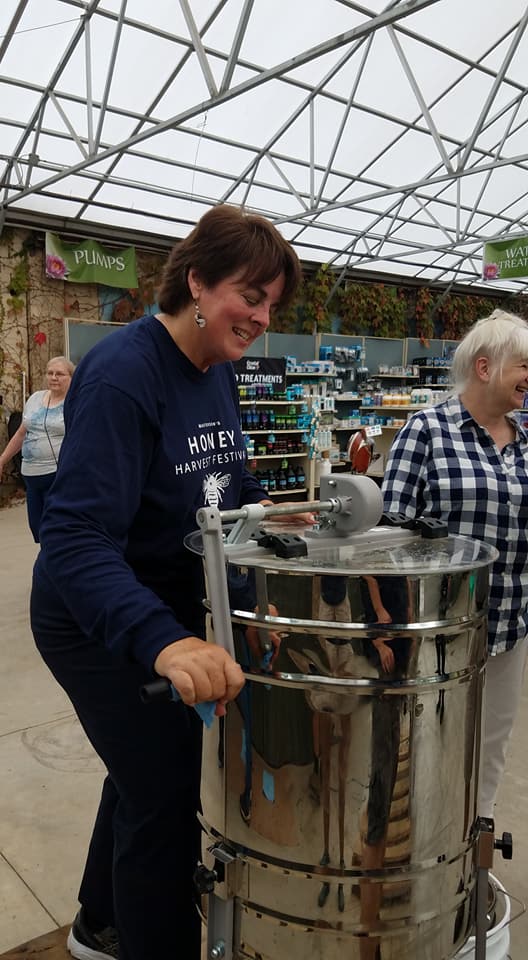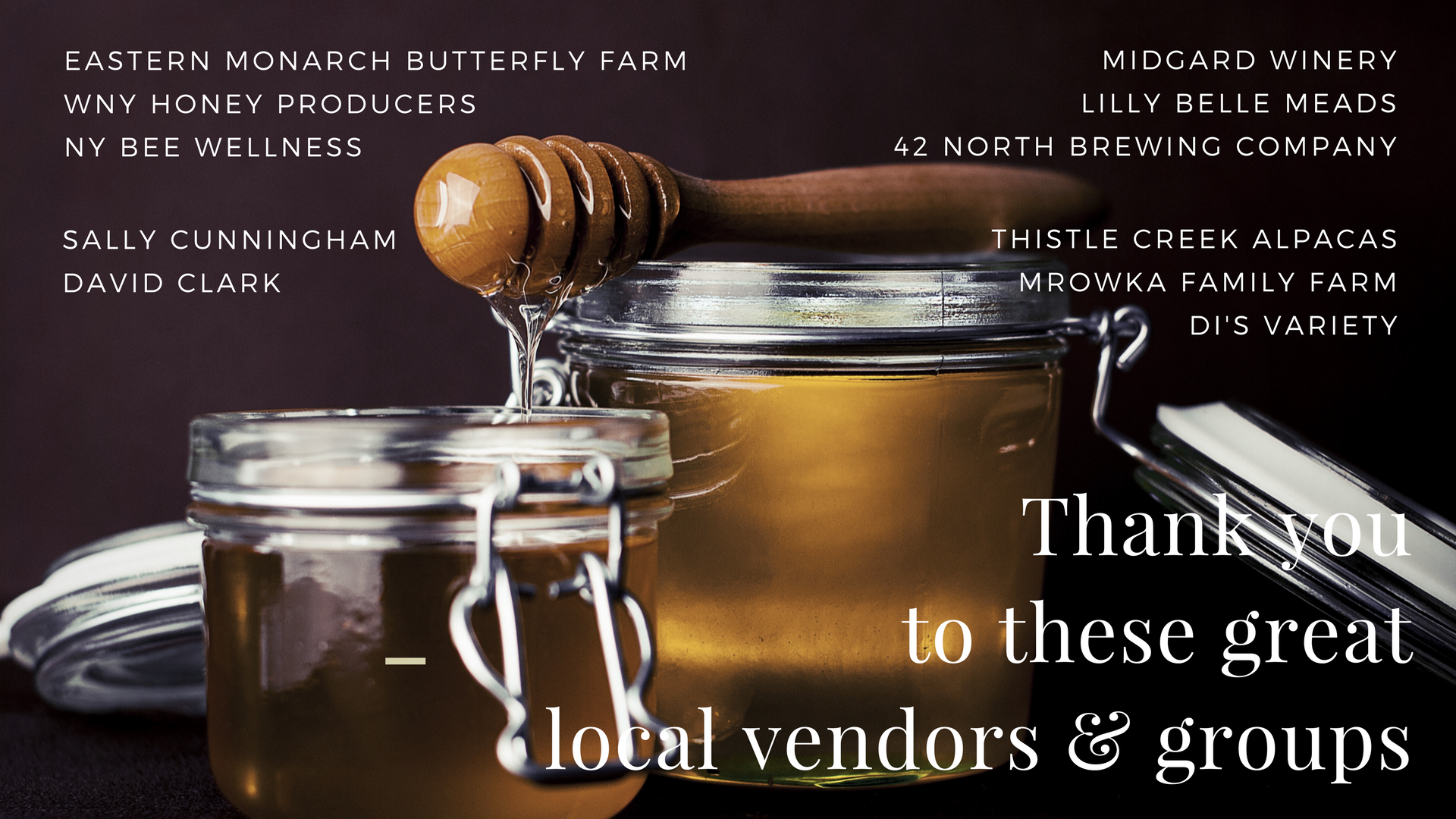Fun Gift Ideas for Everyone on Your Holiday List
/We always have fun ideas for anyone on your list!
Read MoreWe always have fun ideas for anyone on your list!
Read MoreAnd the winners of the 2018 Honey Contest are…
Read MoreIf you've visited our store, you probably noticed the observation hive located in our beekeeping department. This hive is really neat because it gives us a chance to watch the inner workings of a live hive right in the store.
The hive only contains 8 frames, which is a small size relative to a typical set up that would contain 16 - 20 frames. Because of the small size, we expect this colony to swarm regularly. (We're ok with that. More on that in another post later...) Well, the hive swarmed this week and we want to share the story.
On a very simplistic level, here's how normal swarming behavior typically works:
For weeks, the hive had been looking very crowded, wall to wall bees, we couldn't see much of the comb through the bees because there were so many. We saw a queen cell being formed about three weeks ago. We knew swarming was imminent.
But they didn't go! For two weeks, we kept thinking, "Today's gotta be the day," but they stayed and the hive just kept getting more and more crowded.

Finally, last Sunday, they swarmed out of the hive. They ended up congregating in the giant silver maple just outside the front doors of the store. About 50 - 60 feet up in the air. We decided that we were not going to try to collect this particular swarm, but wave goodbye to a really great queen.
The next day, as I was at the counter in the store, I heard a buzz coming from outside and went out to see the swarm mobilizing.
They flew around for a bit in crazy circles...then went right back into the observation hive. Not what we expected.
There were a few hundred or so bees that did not make it back into the hive, and they began to congregate on a pallet in the parking lot. Rain was coming, and I didn't want to just leave this tiny cluster out and exposed, and for several reasons I suspected that there was a queen in that cluster.
With my hand, I just scooped up the little cluster of bees and was putting them into a nuc box with no plan other than to get them out of the rain. Guess who was sitting right in my hand with the second scoop of bees? The queen, of course! Putting her back into the hive isn't really an option, so Mike took her and her small group of friends home with him that night and added some brood frames from another colony. The good queen will live on.
But what about the STILL overcrowded observation hive? Well, they swarmed again on Tuesday, just about 24 hours after they had returned from their first attempt. Again, waaay up in the silver maple.

This time, they hung out in the tree for another 24 hours or so, then started the crazy flying and buzzing that meant they were on the move. Normally, this would mean that the scouts had found a great new hive location and they would all move there. Not these bees! They decided to drop down to the ground and just hang out there. Again, not what we would expect.

At that point, Mike used the bee vac to gather the bees from the ground and has since re-homed them. There were A LOT of bees in this swarm. But maybe no queen? Or maybe there was a second one in the hive and she's with the swarm now?
We'll wait and see what happens!
Here's what the observation hive looks like now. If you saw it before they swarmed, you'll recognize that the number of bees in here is dramatically less than before.
Now we watch for queens (or signs of them) in the observation hive and in the swarm!
Swarm season comes on fast in our northern climate, and it helps us beekeepers if we understand why the bees swarm. Knowing what to look out for can help us to stay ahead of the swarm, or simply to recognize the beauty in it and let it go!
Read MoreBears in the apiary are bad news. If you live in an area that sees even semi-frequent bear activity, you’ll want to be aware of the options available for keeping them away from your bees.
Read MorePicking up your first colony of honeybees can be a little intimidating! We want to help you make it a fun, easy experience. Read through our basic procedure for the day of pickup.
Read More
If you're a new beekeeper, it can seem like there are an overwhelming number of decisions to be made when setting up your first apiary. Do I need a bee suit or just a jacket? Plastic frames or wax foundations? Carniolan or Italian bees? There's no right or wrong answer to any of these questions, just like there's no right answer to give when new beekeepers ask us if they should order a nuc or a package.
Here's how we like to explain the difference, and our recommendations for when each is appropriate:
"Nuc" is short for nucleus colony, and it is easiest to think of it as a small version of a working hive.
What is a perennial? The term "perennial" refers to an herbaceous plant that typically dies back in winter but comes back year after year. Perennials are a great addition to the landscape for a variety of reasons. There are so many varieties to choose from, and there is almost certainly a perennial plant that will solve a garden problem. Some love hot, dry places. Some love damp, shady spots. Some grow tall, some form ground covers. There is likely a perennial that will fit nicely into almost any area of your yard, even a container!
We get to talk to a LOT of people about bees and beekeeping, so we thought it would be helpful to compile a list of the questions we get asked the most often.
Read MoreIt can be challenging to figure out which pieces you need and what goes where when purchasing and setting up your first hive. We hope this will help!
Read MoreWow! What a weekend! We want to extend a huge thank you to everyone who came out this weekend to celebrate the Fifth Annual Honey Harvest Festival with us! The festival is bigger and better every year, and we had a great time meeting new people and chatting about bees all weekend.

A huge thank you to all of our volunteers who spent their time helping out with the event. Beekeepers are pretty great people, we've found, and we have an amazing network of folks in our area.

Steve mastered the uncapping process with a smile.

Kim got a workout as she extracted honey with the hand-crank.
We are so grateful to the local vendors who joined us this year. Without them, the event wouldn't be nearly as much fun. This year awe had such a wonderful variety of folks here and we hope that you'll continue to support these local businesses.

And finally...the results from everyone's favorite part of the event!

and the winner is
Maria submitted sample #10, which received 21% of the votes cast throughout the weekend.
Wondering about the other honeys? Here's the breakdown of where they came from and the percentage of votes each won.
As you can see, every single honey in the contest had some fans, so what this means to us is that ALL honey is awesome. Thank you to all who participated by submitting samples and voting! We'll do it again next year...
In our kids area, we placed a single medium frame out with the instructions to guess how many honeycomb cells the bees could build on it. We had lots of guesses (some great, some not so close!) and the winner with the closest guess was:
The actual cell count for that frame was 2,772, so Mika's guess of 2,750 was the closest! Congrats!

Ever since I was a little kid working here at the garden center, the arrival of the mums meant fall was really here. The smell of the mums as they come off the truck is still one of my favorites, and the bright pops of color throughout the greenhouses are welcome after all of the annuals have faded away.

Hardy mums are perennials, meaning that they will come back year after year. In order to keep them looking their best, follow these simple steps:
When you're a beekeeper, you find yourself with lots of beeswax laying around and you find ways to use it. One of my favorite uses for beeswax is in soap making. We'll host a soap making class a little later in the season, but here's the recipe I've been using for a few years now and it's my favorite.

360 g olive oil
225 g coconut oil
175 g palm oil
32 2 castor oil
7 g beeswax
264 g distilled water
114 g sodium hydroxide
about 1 tablespoon honey
1 – 2 tablespoons fragrance or essential oils, as desired
This recipe has worked well for me, creating a creamy colored bar that does not turn to mush in the shower while still providing good lather.
Not into making your own soap? We sell it here in the store.
Last year, we updated our nursery yard to create a wildlife-friendly environment. Almost immediately, we saw toads move into the stream bed, bees and butterflies visiting the pollinator gardens, and so many species of birds visiting the feeders. It is such a peaceful place to visit!
We want to encourage little explorers to wander through the yard and see what wildlife they can spot, so we've created a scavenger hunt checklist. The lists will be available in our Kids Garden area, and anyone who completes the scavenger hunt can return the list for a Wildlife Explorer Badge. (Ok, it's a sticker, but who doesn't like stickers?)
Bring your little ones in and go on a wildlife scavenger hunt together. Hopefully you'll feel inspired to invite nature back into your backyard!
A walk through our annual and perennial departments is kinda magical right now. We are fully stocked with some of the most beautiful plant material we've ever had. The selection is awesome, and I feel inspired every time I turn a corner.
Drop by and take a look, if only just to see the most gorgeous flowering wisteria on the planet!
The first round of nucs are finally on the truck and making their way to us. Looks like we're on schedule for our Saturday pick-up.
Read MorePlant some pops of color for the bees!
Read MoreA few weeks ago, our website was hacked, flagged, and then shut down by our server. We've been, inconveniently, offline since then.
Rather than remaining angry about this disruption during what is a very busy time for us, we decided to look at the bright side and take this an opportunity to re-design our site and bring even better content to you.
Please bear with us as we add more information back to the site, and don't hesitate to give us a call at the store if you have any questions at all.
Also, a HUGE THANKS to everyone that came out to see us at the Plantasia show this weekend! We had a great time, and we're feeling excited for spring!
Western New York’s largest specialty garden center